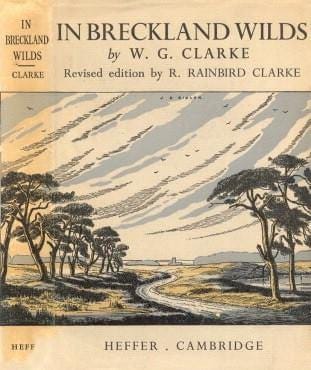Hello, and welcome to our time ‘between the moons’.
While I was thinking about what to explore in this post, I came across some words and images from a presentation that I put together about a decade ago. I can’t now remember the circumstances that led to it happening, but I had been asked to prepare and deliver a talk for The Breckland Society.
If you aren’t familiar with the Brecks, the name refers to a large area covering parts of south west Norfolk and north west Suffolk. The landscape here is characterised by flint-rich sandy soils, heathland, sparse woodland and pools known as meres. The word ‘breck’ derives from ‘broken' and was coined by W G Clarke in his iconic work about the 400-square-mile region, In Breckland Wilds .
Because the soils are so sandy, the Brecks were historically of limited use for agriculture. But they had other attributes, and were much favoured for rabbit warrens as place names such as Thetford Warren, Santon Warren and Wangford Warren attest. Before the soils were stabilised with the arrival of vast pine plantations, dramatic dust storms were commonplace. So much so that in 1677 the diarist John Evelyn observed that ‘The Travelling Sands.......that have so damaged the country, rouling from place to place, like the Sands in the Deserts of Lybia, quite overwhelmed some gentleman's whole estates.’




